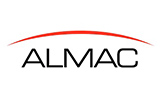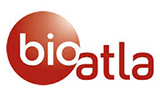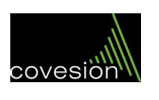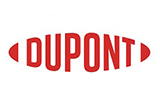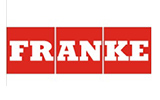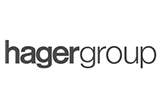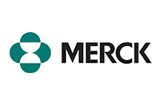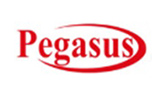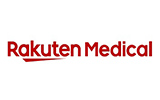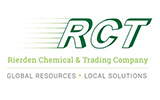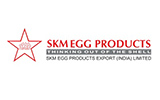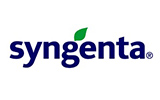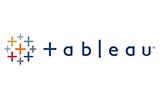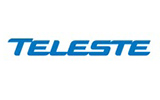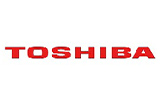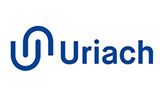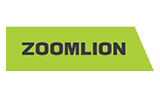CHAPTER 1:INTRODUCTION
1.1.Report description
1.2.Key benefits for stakeholders
1.3.Key market segments
Source: Primary and Secondary Research and AMR Analysis
1.4.Research methodology
1.4.1.Secondary research
1.4.2.Primary research
1.4.3.Analyst tools and models
CHAPTER 2:EXECUTIVE SUMMARY
2.1.Snapshot
2.2.Key findings
2.2.1.Top investment pocket
2.3.CXO perspective
CHAPTER 3:MARKET OVERVIEW
3.1.Market definition and scope
3.2.Key forces shaping global LIQUID SOAP industry/market
3.2.1.Bargaining power of suppliers
3.2.2.Bargaining power of buyers
3.2.3.Thereat of new entrants
3.2.4.Threat of substitutes
3.2.5.Intensity of competitive rivalry
3.3.Market dynamics
3.3.1.Drivers
3.3.1.1.Upsurge in demand due to the panic buying caused due to the outbreak of COVID 19
3.3.1.2.Growing demand for organic liquid soaps
3.3.1.3.Consumer Demand for Flavored Variants Rising
3.3.1.4.Increasing Awareness Towards Hygiene
3.3.2.Restraint
3.3.2.1.Stringent rules on chemical additives
3.3.2.2.Liquid soap manufacturing involves more energy consumption and high cost as compared to the bar soap
3.3.3.Opportunity
3.3.3.1.Powder to liquid gel refill pack of liquid soaps
3.3.3.2.Introduction of small pouches for low-income group
3.3.4.COVID-19 Impact Analysis
CHAPTER 4:GLOBAL LIQUID SOAP MARKET, BY TYPE
4.1.Overview
4.1.1.Market size and forecast
4.2.Organic
4.2.1.Key market trends, growth factors, and opportunities
4.2.2.Market size and forecast
4.2.3.Market analysis, by country
4.3.Conventional
4.3.1.Key market trends, growth factors, and opportunities
4.3.2.Market size and forecast
4.3.3.Market analysis, by country
CHAPTER 5:GLOBAL LIQUID SOAP MARKET, BY PRODUCT TYPE
5.1.Overview
5.1.1.Market size and forecast
5.2.Hand wash
5.2.1.Key market trends, growth factors, and opportunities
5.2.2.Market size and forecast
5.2.3.Market analysis, by country
5.3.Face wash
5.3.1.Key market trends, growth factors, and opportunities
5.3.2.Market size and forecast
5.3.3.Market analysis, by country
5.4.Surface Cleaner
5.4.1.Key market trends, growth factors, and opportunities
5.4.2.Market size and forecast
5.4.3.Market analysis, by country
5.5.Other (Beard wash, Body Wash, Dish wash and Others)
5.5.1.Key market trends, growth factors, and opportunities
5.5.2.Market size and forecast
5.5.3.Market analysis, by country
CHAPTER 6:GLOBAL LIQUID SOAP MARKET, BY APPLICATION
6.1.Overview
6.1.1.Market size and forecast
6.2.Commercial (Restaurants, Hotels, Institute, Quick service restaurants, and Others)
6.2.1.Key market trends, growth factors, and opportunities
6.2.2.Market size and forecast
6.2.3.Market analysis, by country
6.3.Residential
6.3.1.Key market trends, growth factors, and opportunities
6.3.2.Market size and forecast
6.3.3.Market analysis, by country
CHAPTER 7:GLOBAL LIQUID SOAP MARKET, BY DISTRIBUTION
7.1.Overview
7.1.1.Market size and forecast
7.2.Hypermarket/Supermarket
7.2.1.Key market trends, growth factors, and opportunities
7.2.2.Market size and forecast
7.2.3.Market analysis, by country
7.3.Convenience Store
7.3.1.Key market trends, growth factors, and opportunities
7.3.2.Market size and forecast
7.3.3.Market analysis, by country
7.4.Specialty Store
7.4.1.Key market trends, growth factors, and opportunities
7.4.2.Market size and forecast
7.4.3.Market analysis, by country
7.5.Online Sales channel
7.5.1.Key market trends, growth factors, and opportunities
7.5.2.Market size and forecast
7.5.3.Market analysis, by country
CHAPTER 8:LIQUID SOAP MARKET, BY REGION
8.1.Overview
8.1.1.Market size and forecast
8.2.North America
8.2.1.Key market trends, growth factors, and opportunities
8.2.2.Market size and forecast, by Type
8.2.3.Market size and forecast, by Product type
8.2.4.Market size and forecast, by Application
8.2.5.Market size and forecast, by Distribution Channel
8.2.6.Market size and forecast, by Country
8.2.7.U.S.
8.2.7.1.Market size and forecast, by type
8.2.7.2.Market size and forecast, by Product type
8.2.7.3.Market size and forecast, by Application
8.2.7.4.Market size and forecast, by Distribution Channel
8.2.8.Canada
8.2.8.1.Market size and forecast, by Type
8.2.8.2.Market size and forecast, by Product type
8.2.8.3.Market size and forecast, by Application
8.2.8.4.Market size and forecast, by Distribution Channel
8.2.9.Mexico
8.2.9.1.Market size and forecast, by Type
8.2.9.2.Market size and forecast, by Product type
8.2.9.3.Market size and forecast, by Application
8.2.9.4.Market size and forecast, by Distribution Channel
8.3.Europe
8.3.1.Key market trends, growth factors, and opportunities
8.3.2.Market size and forecast, by Type
8.3.3.Market size and forecast, by Product type
8.3.4.Market size and forecast, by Application
8.3.5.Market size and forecast, by Distribution Channel
8.3.6.Market size and forecast, by Country
8.3.7.UK
8.3.7.1.Market size and forecast, by type
8.3.7.2.Market size and forecast, by Product type
8.3.7.3.Market size and forecast, by Application
8.3.7.4.Market size and forecast, by Distribution Channel
8.3.8.France
8.3.8.1.Market size and forecast, by type
8.3.8.2.Market size and forecast, by Product type
8.3.8.3.Market size and forecast, by Application
8.3.8.4.Market size and forecast, by Distribution Channel
8.3.9.Italy
8.3.9.1.Market size and forecast, by type
8.3.9.2.Market size and forecast, by Product type
8.3.9.3.Market size and forecast, by Application
8.3.9.4.Market size and forecast, by Distribution Channel
8.3.10.Germany
8.3.10.1.Market size and forecast, by type
8.3.10.2.Market size and forecast, by Product type
8.3.10.3.Market size and forecast, by Application
8.3.10.4.Market size and forecast, by Distribution Channel
8.3.11.Netherlands
8.3.11.1.Market size and forecast, by type
8.3.11.2.Market size and forecast, by Product type
8.3.11.3.Market size and forecast, by Application
8.3.11.4.Market size and forecast, by Distribution Channel
8.3.12.Switzerland
8.3.12.1.Market size and forecast, by type
8.3.12.2.Market size and forecast, by Product type
8.3.12.3.Market size and forecast, by Application
8.3.12.4.Market size and forecast, by Distribution Channel
8.3.13.Rest of Europe
8.3.13.1.Market size and forecast, by type
8.3.13.2.Market size and forecast, by Product type
8.3.13.3.Market size and forecast, by Application
8.3.13.4.Market size and forecast, by Distribution Channel
8.4.ASIA-PACIFIC
8.4.1.Key market trends, growth factors, and opportunities
8.4.2.Market size and forecast, by TYPE
8.4.3.Market size and forecast, by Product type
8.4.4.Market size and forecast, by Application
8.4.5.Market size and forecast, by Distribution Channel
8.4.6.Market size and forecast, by Country
8.4.7.China
8.4.7.1.Market size and forecast, by type
8.4.7.2.Market size and forecast, by Product type
8.4.7.3.Market size and forecast, by Application
8.4.7.4.Market size and forecast, by Distribution Channel
8.4.8.Japan
8.4.8.1.Market size and forecast, by type
8.4.8.2.Market size and forecast, by Product type
8.4.8.3.Market size and forecast, by Application
8.4.8.4.Market size and forecast, by Distribution Channel
8.4.9.India
8.4.9.1.Market size and forecast, by type
8.4.9.2.Market size and forecast, by Product type
8.4.9.3.Market size and forecast, by Application
8.4.9.4.Market size and forecast, by Distribution Channel
8.4.10.South Korea
8.4.10.1.Market size and forecast, by type
8.4.10.2.Market size and forecast, by Product type
8.4.10.3.Market size and forecast, by Application
8.4.10.4.Market size and forecast, by Distribution Channel
8.4.11.Australia
8.4.11.1.Market size and forecast, by type
8.4.11.2.Market size and forecast, by Product type
8.4.11.3.Market size and forecast, by Application
8.4.11.4.Market size and forecast, by Distribution Channel
8.4.12.Rest of Asia Pacific
8.4.12.1.Market size and forecast, by type
8.4.12.2.Market size and forecast, by Product type
8.4.12.3.Market size and forecast, by Application
8.4.12.4.Market size and forecast, by Distribution Channel
8.5.LAMEA
8.5.1.Key market trends, growth factors, and opportunities
8.5.2.Market size and forecast, by Type
8.5.3.Market size and forecast, by Product type
8.5.4.Market size and forecast, by Application
8.5.5.Market size and forecast, by Distribution Channel
8.5.6.Market size and forecast, by Country
8.5.7.Brazil
8.5.7.1.Market size and forecast, by type
8.5.7.2.Market size and forecast, by Product type
8.5.7.3.Market size and forecast, by Application
8.5.7.4.Market size and forecast, by Distribution Channel
8.5.8.South Africa
8.5.8.1.Market size and forecast, by type
8.5.8.2.Market size and forecast, by Product type
8.5.8.3.Market size and forecast, by Application
8.5.8.4.Market size and forecast, by Distribution Channel
8.5.9.United Arab Emirates
8.5.9.1.Market size and forecast, by type
8.5.9.2.Market size and forecast, by Product type
8.5.9.3.Market size and forecast, by Application
8.5.9.4.Market size and forecast, by Distribution Channel
8.5.10.Rest of LAMEA
8.5.10.1.Market size and forecast, by type
8.5.10.2.Market size and forecast, by Product type
8.5.10.3.Market size and forecast, by Application
8.5.10.4.Market size and forecast, by Distribution Channel
CHAPTER 9:COMPETITION LANDSCAPE
9.1.Top winning strategies
9.2.Product mapping
9.3.Competitive dashboard
9.4.Competitive heat map
9.5.Key developments
9.5.1.Acquisition
9.5.2.Business Expansion
9.5.3.Product Launch
CHAPTER 10:COMPANY PROFILES
10.1.3M
10.1.1.Company overview
10.1.2.Key Executives
10.1.3.Company snapshot
10.1.4.Operating business segments
10.1.5.Product portfolio
10.1.6.R&D Expenditure
10.1.7.Business performance
10.2.Bluemoon Bodycare
10.2.1.Company overview
10.2.2.Company snapshot
10.2.3.Product portfolio
10.3.Godrej Consumer Products
10.3.1.Company overview
10.3.2.Key Executives
10.3.3.Company snapshot
10.3.4.Operating business segments
10.3.5.Product portfolio
10.3.6.R&D Expenditure
10.3.7.Business performance
10.3.8.Key strategic moves and developments
10.4.GOJO Industries Inc.
10.4.1.Company overview
10.4.2.Key Executives
10.4.3.Company snapshot
10.4.4.Product portfolio
10.4.5.Key strategic moves and developments
10.5.Kao Corporation
10.5.1.Company overview
10.5.2.Key Executives
10.5.3.Company snapshot
10.5.4.Operating business segments
10.5.5.Product portfolio
10.5.6.R&D Expenditure
10.5.7.Business performance
10.5.8.Key strategic moves and developments
10.6.Lion Corporation
10.6.1.Company overview
10.6.2.Key Executives
10.6.3.Company snapshot
10.6.4.Operating business segments
10.6.5.Product portfolio
10.6.6.R&D Expenditure
Source: Corporate Publications and AMR Analysis
Financial year ended on December 31, 2020
10.6.7.Business performance
10.6.8.Key strategic moves and developments
10.7.NEW AVON LLC
10.7.1.Company overview
10.7.2.Key Executives
10.7.3.Company snapshot
10.7.4.Operating business segments
10.7.5.Product portfolio
10.7.6.Business performance
10.8.PROCTER & GAMBLE
10.8.1.Company overview
10.8.2.Key Executives
10.8.3.Company snapshot
10.8.4.Operating business segments
10.8.5.Product portfolio
10.8.6.R&D Expenditure
10.8.7.Business performance
10.8.8.Key strategic moves and developments
10.9.Reckitt Benckiser Group plc
10.9.1.Company overview
10.9.2.Key Executives
10.9.3.Company snapshot
10.9.4.Operating business segments
10.9.5.Product portfolio
10.9.6.R&D Expenditure
10.9.7.Business performance
10.9.8.Key strategic moves and developments
10.10.Unilever Plc
10.10.1.Company overview
10.10.2.Key Executives
10.10.3.Company snapshot
10.10.4.Operating business segments
10.10.5.Product portfolio
10.10.6.R&D Expenditure
10.10.7.Business performance
10.10.8.Key strategic moves and developments


